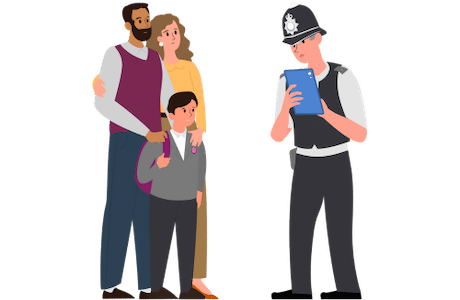Schools have an important duty of care towards pupils, which includes taking measures to safeguard and support their mental and physical wellbeing. While children’s mental health remains a top priority in schools and is constantly raised as a topic of concern by teachers, supporting pupils is still a prevalent challenge within education settings.
Recent NHS Digital data shows that the number of children requiring serious mental health support has increased. There has been a 39% rise in referrals in the last year for NHS mental health treatment for under 18s – reaching more than a million in 2021/22.
Loneliness can be defined as a subjective feeling about the gap between a person’s desired levels of social contact and their actual level of social contact. While mental health topics are slowly shedding their stigma, loneliness – especially in young people – remains a taboo. A recent rise in loneliness among children is a growing cause for concern in terms of young people’s mental wellbeing.
Although loneliness is not defined as a mental health condition, it is an experience that can affect pupils’ mental health – and highlights the need for schools and educational settings to be able to spot signs when it comes to wellbeing concerns. This will help to ensure that students can get the support they need.
The rise of loneliness among young people and its impact
According to Childline, calls to the charity from children under 11 struggling with loneliness have risen by 71 percent in just five years. Between 2021 and 2022, the charity delivered 5,564 confidential counselling sessions on loneliness with children. Although these numbers have dropped slightly, the number of children in need of support remains high – and the charity is contacted on average 15 times a day by children suffering from loneliness.
A recent study by the World Health Organisation identified that loneliness harms physical and mental health and can increase the long-term risk of depression and anxiety in young people.
Socialising is a key part of children’s social development but according to recent reports, the cost-of-living crisis is also impacting loneliness among young people, leaving them unable to connect with their peers and in turn resulting in them experiencing isolation.
Given some of the wider implications that loneliness can have on children and their mental health, it is vital now more than ever that schools track mental health and wellbeing-related concerns to ensure children are given the support they may need and to prevent concerns from escalating.
Spotting signs of loneliness amongst children
Recent data around the number of children experiencing loneliness, coupled with the existing societal pressures that children are facing highlight the real need to be conscious of identifying signs that a child may be feeling lonely.
It’s important to be aware that for some pupils, their risk of loneliness may be higher owing to their own circumstances and experiences, but trusting when something doesn’t feel right and recording every concern – no matter how small – is vital.
Some signs to look out for in pupils that may indicate they are feeling lonely include:
- Withdrawal from social circles and/or issues with other pupils
- Changes in appearance and hygiene
- Seeming quiet or withdrawn, or are sad for no obvious reason
- Loss of appetite
- Becoming disruptive in class or feeling frustrated
- Low self-esteem or loss of confidence
- Seemingly very tired during school hours
- Being disengaged with peers and in class.
Using software to better support children’s mental health
One way in which schools can play a part in supporting children with their mental health is by ensuring they have protocols and software like CPOMS in place to monitor, track and record the wellbeing of pupils. CPOMS software allows you to gather critical data which will help to identify the needs of students.
With CPOMS, all staff can note and monitor any changes in the behaviour and wellbeing of students – this information can help to spot trends more easily which can in turn help to enable quick action and identify any additional need for support.
Staff can also create customised categories, such as “sitting alone” or “not talking to friends” to accurately log different types of wellbeing concerns and identify early indicators of more serious safeguarding issues. Recording these concerns can help to build a wider picture of an individual’s mental health and wellbeing over a longer period, ensuring the right interventions to be made.
For more information on ways to monitor pupil’s mental health, read our guide to mental health and wellbeing in schools. Or, to find out more about how CPOMS can be used in your setting to support children’s mental health and wellbeing, book a free demo.




